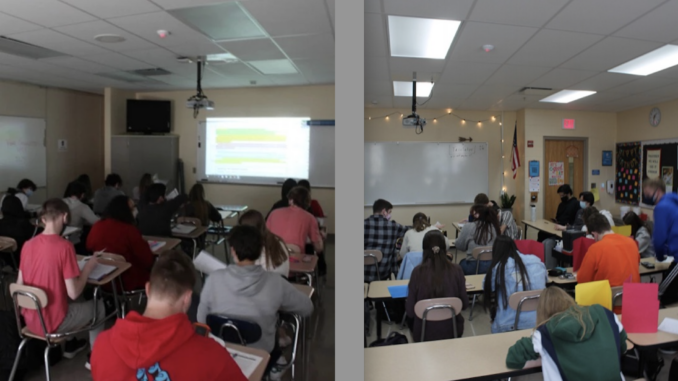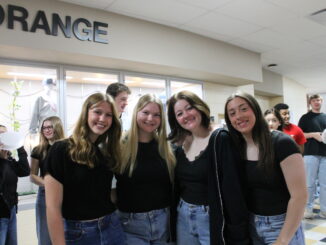
photo credit: Jaylen Lewis
March 15: a day like no other that will not be soon forgotten. Going back to school full-time was a big change for all students, and many are still getting used to it.
The decision to return everyone to school was not an easy one to make and was met with mixed opinions.
“It didn’t matter what decision I made. I knew someone was not going to be happy about it,” Superintendent Mark Raiff said. “I don’t like to disappoint people, but I also know how important it is for our students to be in school with their teachers learning five days a week.”
Many students disagree and believe the hybrid schedule should have stayed in place for the rest of the year. A petition was even started on Change.org called “Olentangy High Schools Stay Hybrid” that urged the school board to reconsider their decision to return to full-time school. As of March 11, the petition has 2,212 signatures and many comments explaining students’ concerns.
“I believe that we should have stayed hybrid for the rest of the year,” junior Kate Uhrick said. “This school year has been difficult, but we are still in a pandemic. I believe that we need to put our safety first.”
Maintaining distance between students was a big concern for some, as returning to full capacity meant the space between people would have to decrease.
“Before, we were not even six feet apart from others and that distance has gotten even smaller. Many classrooms were already full, and some had to fit 15 more kids,” Uhrick said.
The increased amount of people required more attention to be given to social distancing guidelines in order to keep everyone safe.
“One thing that had to be more emphasized was one-way hall traffic and one-way staircases in the academic wings, as well as staying to the right in two-way hallways,” Principal Trond Smith said. “The most important layer of mitigation was to continue to wear masks properly.”
Some students, as well as many teachers, were ready to go back. Learning half of a class’s material outside of school was difficult and time consuming for everyone.
“As a teacher, I feel that students learn best with the daily in-person format. I think the data showed that the risk of school spread was very small, and that it was the right time to come back, given that teachers have had two doses of the vaccine offered to us,” biology teacher Kevin Jamieson said.
When it came to making the decision, the school board paid close attention to how many cases of COVID-19 there were from staff and students.
“From Aug. 31 to Feb. 24, we had 316 staff cases and 752 student cases in the district. That’s about 13 percent of our staff and about 1.9 percent of our student population,” Raiff said.
Another factor in making the decision was avoiding full-time online school. If the district went back to full-time in-person school earlier, it might have been too dangerous to stay at school for the whole year.
“The biggest thing I wanted to avoid was having us have to return to the fully remote learning. So, as difficult as the hybrid schedule was, I decided I was going to be very cautious [on going back full-time],” Raiff said. “There were people who had been hammering me all year to get full attendance, but I wasn’t going to do that until I felt comfortable.”
One positive effect of allowing students to go back to school full-time is that it has opened the door for some events that might not have happened otherwise, like a senior formal. For Orange, this will be a dinner at the Columbus Zoo and Aquarium at the Water’s Edge pavilions.
“Tables will be appropriately distanced and will seat between eight-10 students,” Junior Class Cabinet Adviser Samantha Uritus said. “The glass ‘garage’ style doors in each of the four pavilions will also be opened to allow fresh air circulation and an unobstructed view of the river.”
Regardless of opinions on the positives and negatives of returning, Olentangy schools went back full-time and the change is something everyone has had to adapt to.
“I’m really proud of our students, staff and parents for how they’ve all made the best of this difficult situation,” Raiff said. “I’m very confident that we’re going to be able to finish the year in-person, but that doesn’t mean the pandemic’s over.”


